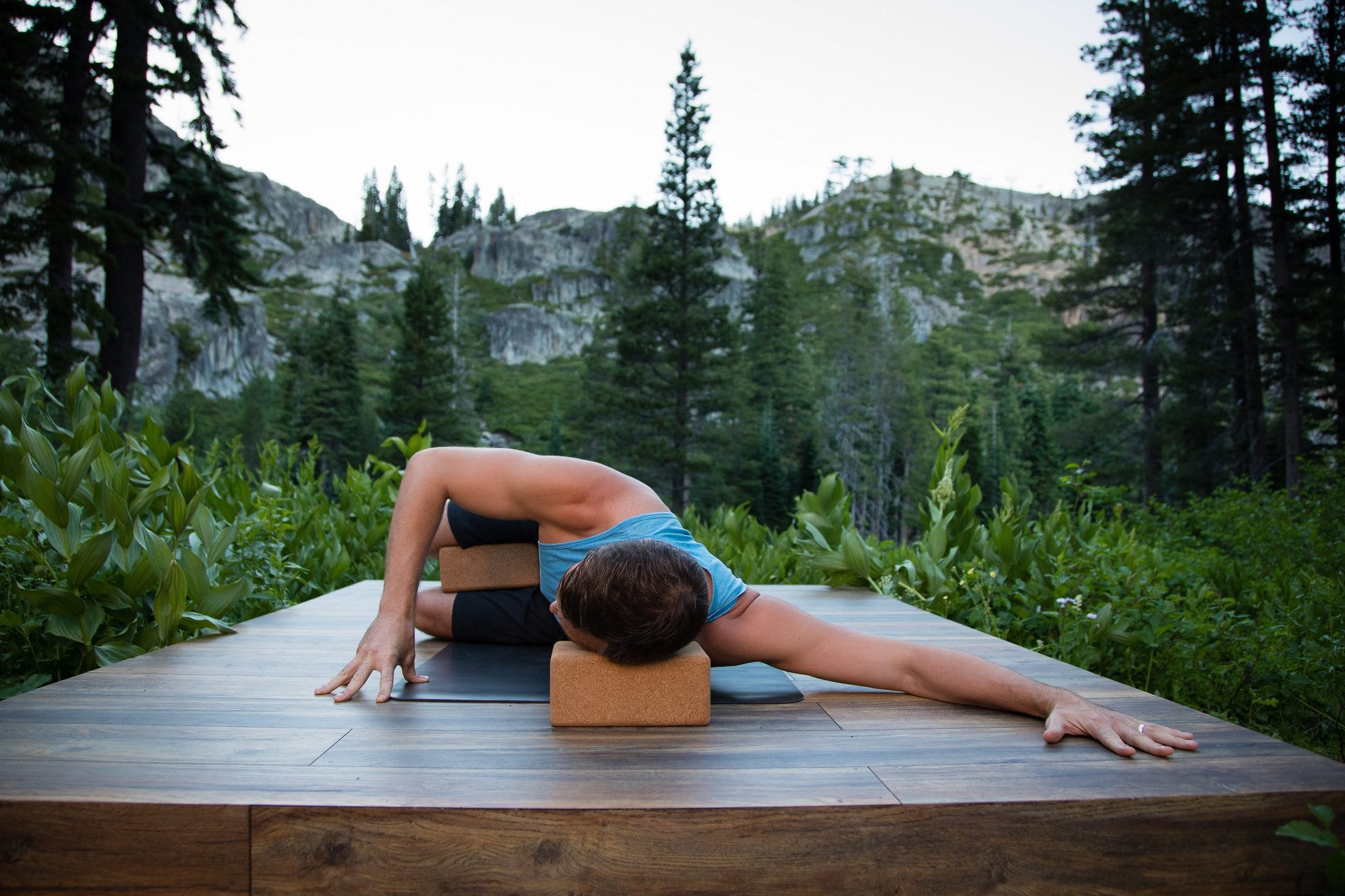
On our yoga mats, we are continually seeking space. We seek space physically through asana with static and dynamic movement. We seek space mentally and emotionally by revisiting our awareness and breath, again and again, to press pause on the continuous hum of mental noise. These techniques allow us to roll up our mats feeling relaxed, rejuvenated, and at-ease in our body and mind. Though there is one other method you’ve likely heard of, though probably not in conjunction with your asana practice. Yoga, meet myofascial release.
Yoga Instructor, RAD Master Coach, and myofascial release therapist Denelle Jarro Numis blends these two healing modalities. Through her experience leading asana-based myofascial release classes, Denelle helps us to understand how releasing and mobilizing restricted “fascia”—the network of connective tissue that exists throughout the body—isn’t a task limited to your gym-cool-down. Instead, the combination allows us to experience newfound space we can gladly enjoy, both on and off the mat.
The Cobweb of Fascia
As anatomical research and biomechanical knowledge deepens, movement specialists are becoming more curious about fascia and how this soft-tissue structure predicts our relationship between stability and movement. In the simplest terms, if there are restrictions in your fascia (i.e. if the fascia is bound up or tight), there will be restrictions in your body, your movement, and mobility.
Denelle likes to describe fascia as a cobweb. “I think about when cobwebs get woven together—they’re pretty taught and strong and stuck,” she says. “Only when you touch them and pull things away does there become more space and, inevitably, more room to move around.” Myofascial release, which is done using various tools like massage balls and foam rollers, is “the pulling at the cobweb”—the liberation of restricted tissue to create space.
So why does this soft-tissue get tight on us, causing a lack of mobility, imbalances and asymmetry? Denelle explains the body keeps score of traumas bestowed on us by lifestyle, movement patterns and history. “Trauma exists from a myriad of activities, whether it’s injuries, whether it’s emotional pain, whether it’s a sedentary lifestyle or a really super active lifestyle,” she says. “We’re continually trying to recover from whatever has been done to the body.” The medicine? In Denelle’s words, “Roll out the issues in your tissues.”
Creating Space to Move
Denelle is a Vinyasa gal herself, but explains strength and flexibility aren’t the only things that need honing and balancing. “It’s also important to find ways to move space in the body,” she says. For Denelle, combining myofascial release with asana has been key. “I like the combination of vinyasa with myofascial release because it’s dynamic and you get to see immediate results from using the tools,” she says. Think deeper poses, less rigidity.
You likely have some props lying around and can combine the two on your own; though to get truly spoiled and learn therapeutic techniques you can take home, make it to a yoga class that incorporates both modalities. Denelle teaches one such class (shout out to our San Diego and San Francisco events, where she’ll be setting up shop, tools and all!) where you’ll experience a shape, followed by myofascial release, and then same shape, revisited.
She explains the reason for this test/re-test method: “It’s a chance for you to see how your body naturally moves in space, and then work with myofascial release, try it again, and see how much more space and mobility you have in the body.” The second time around, the shape evolves both visually and viscerally. Visually, it’s often a deeper expression of the pose. Viscerally, there is a feeling of liberation, sustainability, and comfort.
Take Triangle Pose, for instance, which is a shape Denelle loves her students to experience before and after using myofascial release. “Mostly, I like rolling out the quadriceps and the hamstrings,” she says. Denelle explains this allows for more space in the hip-socket, which leads to extra length in the sides of the body. Other areas worth targeting include the side body and back body, as well as heart-opening stretches, which all lend additional room in Trikonasana.
This yogini/myofascial release expert seems to have the balance down between her dynamic Vinyasa classes and much slower myofascial release practice. Yet she reiterates there is no one-size-fits-all. That goes for your choice of exercise or class style, and combination of the two. She urges, “You have to find what works for you and don’t be afraid to try something new.”
So whether you don running shoes before rolling out those cranky IT bands, or lay on a tennis ball mid-home practice, one thing is for sure. I think it’s time we all roll out the issues in our tissues.
—
 Kacey Janeen Waxler is a California-based yoga instructor and writer on the hunt for adventure and good stories. Her words can be located amongst noteworthy brands including Corona Extra, Athleta, and Darling Magazine, and in the flesh she can be found reading unapologetically from the glow of a headlamp, geeking out over sequencing, or neck deep in a deliciously hot bath. Follow her adventures at @kaceyjaneen or kaceyjaneen.com.
Kacey Janeen Waxler is a California-based yoga instructor and writer on the hunt for adventure and good stories. Her words can be located amongst noteworthy brands including Corona Extra, Athleta, and Darling Magazine, and in the flesh she can be found reading unapologetically from the glow of a headlamp, geeking out over sequencing, or neck deep in a deliciously hot bath. Follow her adventures at @kaceyjaneen or kaceyjaneen.com.